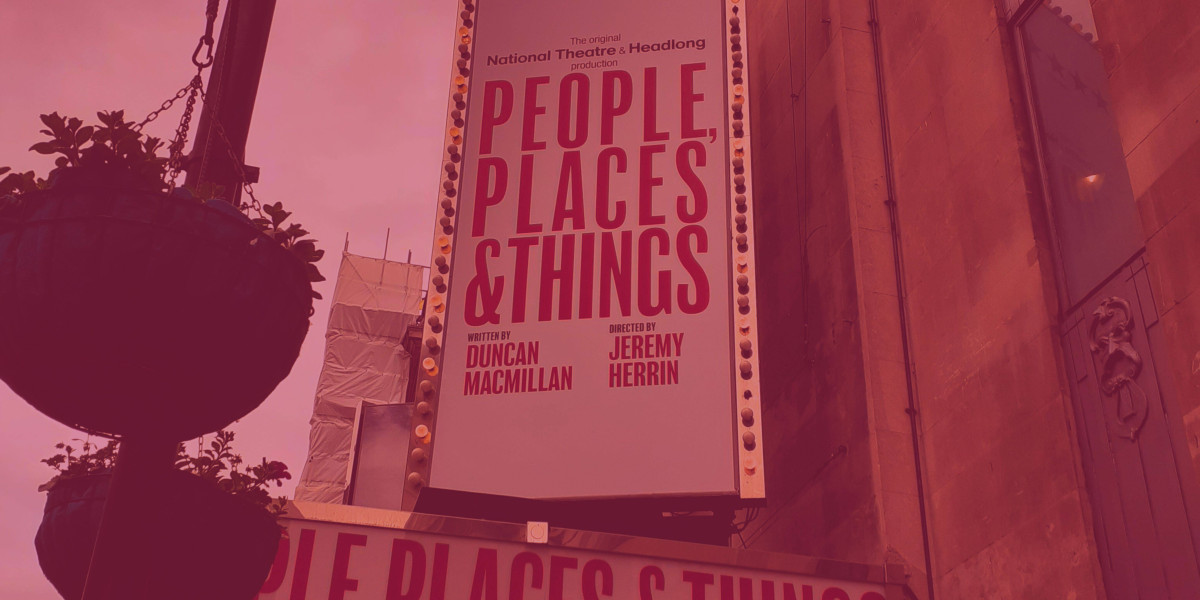
9th August 2024
Matt Thomas talks about his experience watching this seminal play.
"Astonishing, I wish the whole world could see it!"
As an individual in recovery from addiction and mental health issues, the noise in my head is still pretty loud. To the extent that I got a T-shirt made that asks, “Does The Noise In My Head Bother You?”
The other week, I saw 'People, Places, and Things' at the Trafalgar Theatre in London. It answered loudly: 'No, it doesn’t bother me. Bring your noise. Here’s mine. Listen.' It was my second time at what is far more than a play—a two-way experience. It’s the closest portrayal I’ve witnessed to being in residential addiction treatment, which is something I have experienced more than several times on my journey to recovery.
For one of the few times in my life, my internal noise was matched—not just in decibels, but in intensity, emotion, and understanding.
The sound of the production is astonishing. The audio is an experience in itself. The visceral, guttural, primal sounds, the detox scenes, the club scenes, the silences. It’s relentless. Twice, it left me tearful—a primal kind of tearful, the cathartic relief of feeling heard at the deepest level. The noise of “a scream looking for a mouth,” to quote the script. It’s everybody’s scream.
Sometimes, generations find a vessel for unexpressed pain and emotion. That vessel is the family’s addicted person. The fuller the container, the louder the scream. Along with Emma, the protagonist, People, Places, and Things itself is the vessel. And this one is L.O.U.D.
How ironic that I felt so heard by being exposed to the loudest of noises!
There’s so much to say about this experience, but I can’t do it justice. This is an important work of social, medical, and cultural significance with the potential to bring about change.
Its story represents all the sides of what we campaign so hard for at Taking Action on Addiction. We speak to those who believe addiction in others is a moral weakness, and to those who believe addiction in themselves makes them a bad person. We aim, through research, telling stories, creating content, and putting on events, to communicate the reality of what addiction actually is. We attempt to motivate people who think they are beyond help, or that they do not deserve it, that they are not beyond help, and that they do deserve it. We encourage them to reach out and give them somewhere to reach out to.
So many stand-out factors make People, Places, and Things such a lifelike experience. Just a few are the time-travel depiction of experiencing a blackout as if by the stroke of an editor’s key—going from one hellish scenario straight into another. The excruciating detail of the language in the wonderful script. Nothing is wasted; no word is superfluous, inappropriate, cringy, condescending, or patronizing. The empathy for the addicted population oozes from every syllable—even when the characters portrayed are not at their best.
At Taking Action On Addiction, we believe addiction starts as a coping mechanism for experiences such as trauma, family dysfunction, and social circumstances. As People, Places, and Things unfolds, this becomes clear. The production aligns with modern thinking. Emma seems to display signs of neurodiversity and ADHD, in particular, which is now closely linked with the development of addiction. If not deliberate, it is incredibly prescient.
Sitting on the panel at the end of the play, along with the writer, Duncan MacMillan, lead Denise Gough, and representatives from the amazing charities Outside Edge Theatre Company and Words Matter, was the icing on the cake.
Hearing Denise and Duncan talk firsthand about what it means to them and what inspires them made the whole experience even more personal.Hearing from the other charities how the play amplifies their messaging, directly affecting and improving people’s lives, is what this is all about. It felt like we are all on the same side. And we are.
I often like to say—only half-joking—that recovery would be fantastic if it wasn’t for other people! Learning to live in recovery with people, places, and things as they are is tough and continues to be tough—because I used to drink and use AT people, places, and things.
Now I don’t have that outlet, I have needed to develop alternative, healthy coping mechanisms found in recovery, in the 12 Step Fellowships, and many other stops along the way. This experience brings it all to life in a way that I believe non-addicted people can truly understand. I wish the whole world could see it.